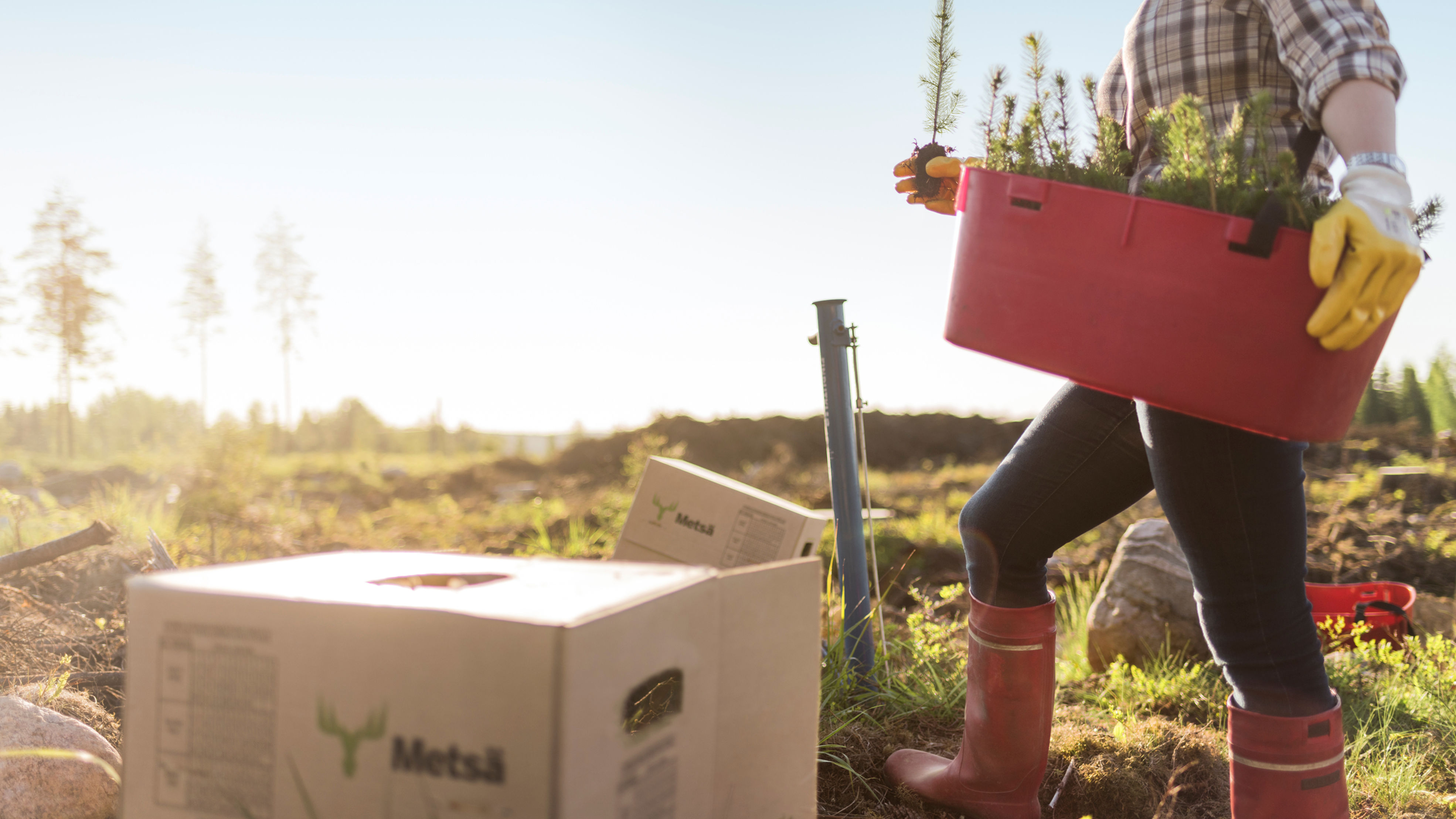The examination of regeneration should start with assessing felling practices: regeneration felling and thinning. In thinning, part of the trees are removed in order to improve the growing conditions for the remaining trees so that there is less competition for sunlight and nutrients, and more growing space for roots and crowns. For ensuring the steady growth of forests and the optimal utilization of raw materials received at different stages of growth, both regeneration fellings and thinnings are needed.
A new stand is established after regeneration felling
After our long history of even-aged forestry, regeneration felling, where most of the trees in the area are removed, is the most common harvesting method in Finland. One alternative is uneven-aged management, where the aim is to maintain a continuous forest cover at least in some part of the regeneration area. However, this alternative method to forest management has not so far been very popular among Finnish forest owners. If we wish to apply uneven-aged management practices to our even-aged forests, achieving desired results would likely require decades of persistent work.
In Finland, forest owners must notify the Forest Centre in advance of all logging plans by submitting a notification of forest use. Already at this stage, the forest owner who has chosen to carry out regeneration felling must declare what measures will be taken after the felling operations in order to establish a new, vital seedling stand as required by the Forest Act. The forest use plan must indicate the targeted species composition, and whether it will be pursued by the means of natural regeneration, seeding or planting, and if soil preparation is planned in order to support the conditions for regeneration.
Planted and natural seedlings grow together
A new seedling stand is generally established by planting seedlings of domestic tree species suitable for the respective growing site, approximately 1,800-2,000 seedlings per hectare. On poor, grassless lands, regeneration is carried out by sowing pine seeds, and by natural regeneration utilising the surrounding forest or seed trees left on the stand, whereupon the target forest density is approximately 5,000 seedlings per hectare. The existing seedlings and the natural seedlings from different tree species that have sprung up after regeneration will enrich the new seedling stand the proportion of naturally born trees has been shown to be large also in planted and seeded forests.
So, how can we claim that we plant at least four new trees for every tree felled during regeneration felling? When a regularly thinned forest achieves the regeneration phase, approximately 400 logs remain per hectare. After successful natural regeneration and seeding, there are several thousands of seedlings. The minimum target density pursued with the most common method of regeneration, planting, is 1,800 seedlings per hectare, so we can say that each tree has been replaced by at least four new trees which will, in addition, be accompanied by numerous seedlings from natural regeneration.
The young forest will naturally grow thinner over the years when competing for living space or, for example, as a result of moose pasturing. When tending the young stands, part of the stems are removed for silvicultural reasons; in order to maintain favourable growing conditions and the vitality of the stand.





